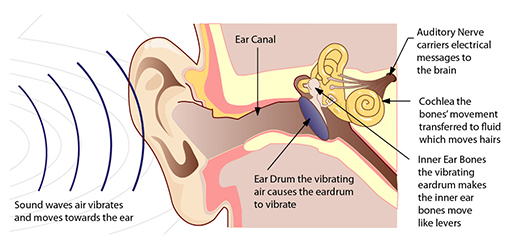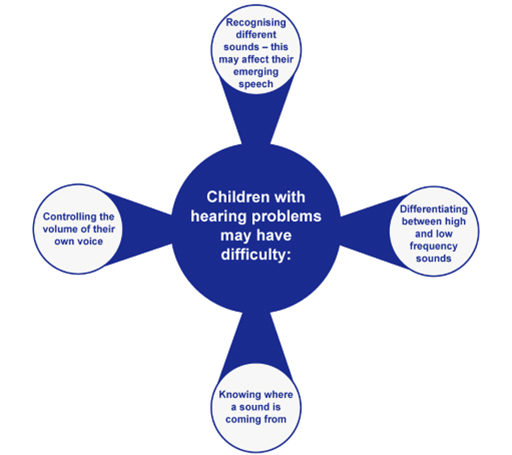2.1 Hearing
At about 4–6 weeks after conception, the ear begins to form and by 28 weeks of pregnancy the baby can begin to hear some sound.
At birth, once the fluid has drained from the ear canals, babies begin to hear much more clearly. Yet before birth, babies respond to their mother’s voices and they can hear the wombs internal rhythms.
Figure 4 below shows the different parts of the ear.
As babies grow, hearing and sound are important in helping to develop language and communication. Babies and young children copy the sounds they hear and the response they get from their carers encourages them to repeat these sounds. As young children develop, they learn what different sounds mean, such as speech, a ringing phone, music or a smoke alarm. Being able to discriminate between sounds and knowing the direction that sounds are coming from are important skills that children need to acquire.
Babies and young children have their hearing tested at regular intervals during the first few years of life, so any problems are usually detected early. Common ailments, such as colds or ear and throat infections may temporarily affect hearing.
-
What sorts of sounds can you hear now? Are they pleasant sounds? What sounds do you particularly enjoy – and why?


